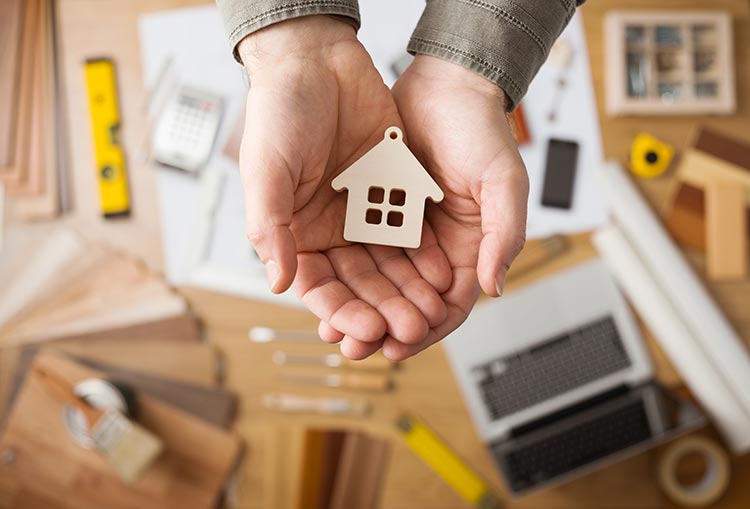
In real estate transactions both large and small, it’s common to have incidental property – furniture, fixtures, and equipment – included with the buildings that are bought and sold.
However, starting with the Tax Cuts and Jobs Act of 2018, taxpayers no longer could include equipment, machinery, vehicles, and other personal property in their 1031 exchanges; now, exchanges are limited to like-kind real estate (though that definition is still pretty broad when it comes to exchanging different types of real property). Real property generally refers to land, a range of permanent and fixed structures, including all kinds of buildings, as well as parking lots, fences, advertising billboards, and the like.
Moveable items such as furniture, appliances, and equipment – non-permanent items that have value – aren’t considered part of the 1031 exchange since they are personal property and not real property. In some instances, you may have to declare the fair market value of these items when you report your exchange to the Internal Revenue Service, and you may have to pay taxes on them.
Let’s take a closer look at how furniture and other personal property works in a 1031 exchange.
1031 Exchanges and Incidental Property 15 Percent Limitation
Furniture and other moveable items are considered “incidental property” in a 1031 exchange. Furniture, fixtures, and equipment certainly can be included in your exchange, but there are some rules regarding value that may result in a taxable event when you report your exchange to the IRS using Form 8824, Like-Kind Exchanges.
If the aggregate fair market value (FMV) of the incidental property contained in 1031 exchange assets does not exceed 15 percent of the aggregate FMV of the real property in the exchange, it can be disregarded and you don’t have to identify and report it as part of the 1031 exchange.
Here’s an example for clarification: Your adjusted cost basis in a relinquished 1031 exchange property is $770,000, and you exchange into a recently renovated Class A triplex that contains a variety of well-appointed furniture, as well as several brand-new washing machines and dryers in a small shared laundry room. The replacement property cost $2 million, and the aggregate fair market value of the personal property is about $100,000. Since $100,000 is just 5 percent of $2 million, you don’t have to separately identify the personal property as part of your 1031 exchange.
However, since the personal property you received has a fair market value of $100,000, and it’s not considered like-kind real estate, it does not qualify for nonrecognition of gain.1 Instead, it is classified as taxable boot and may be subject to taxation at your nominal tax rate under Section 1245 depreciation recapture.2
However, there can be some workarounds. Bonus depreciation rules allow taxpayers to depreciate certain business assets that have a maximum useful life of at least 20 years in a single tax year rather than over their full useful lifespan. This accelerated tax deduction for assets used in or personal use may allow you to deduct a significant portion of incidental property costs and eliminate or reduce your amount of taxable boot. Bonus depreciation is scheduled to phase out after 2026, and it’s on a sliding scale until then: 60 percent in 2024; 40 percent in 2025; and 20 percent in 2026.
Closing Thoughts
Incidental property such as furniture is commonly included when real estate changes hands. Beginning in 2018, incidental and personal property cannot be part of a 1031 exchange. This property doesn’t have to be reported when its value is less than 15 percent of the fair market value of the exchanged real estate; however, the value of the incidental property may result in a taxable event.
If your 1031 exchange replacement property contains a great deal of furniture and other incidental property, it would be wise to consult with a taxation professional who has experience with 1031 exchanges to determine whether this incidental property will create a tax liability, and whether you can fully depreciate these assets for the tax year in which they are placed in service.
1 Treasury Department and IRS issue final regulations regarding the exchange of like-kind real property, IRS, https://www.irs.gov/newsroom/the-treasury-department-and-irs-issue-final-regulations-regarding-like-kind-exchanges-of-real-property
2 26 U.S. Code 1245 – Gain from dispositions of certain depreciable property, Cornell Law School Legal Information Institute, https://www.law.cornell.edu/uscode/text/26/1245
This material is for general information and educational purposes only. Information is based on data gathered from what we believe are reliable sources. It is not guaranteed as to accuracy, does not purport to be complete and is not intended to be used as a primary basis for investment decisions. It should also not be construed as advice meeting the particular investment needs of any investor.
Realized does not provide tax or legal advice. This material is not a substitute for seeking the advice of a qualified professional for your individual situation.
Costs associated with a 1031 transaction may impact investor's returns and may outweigh the tax benefits. An unfavorable tax ruling may cancel deferral of capital gains and result in immediate tax liabilities.



